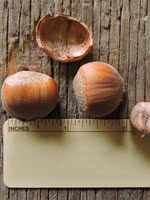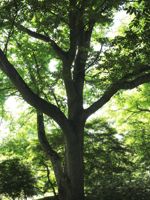Mon-Fri 9am - 5pm Mountain time
Manchurian Walnut vs Aldara Hazelnut
Corylus heterophylla Het 3
Juglans mandshurica
NOT AVAILABLE THIS SEASON - MIGHT RETURN
NOT AVAILABLE THIS SEASON - MIGHT RETURN
Aldara Hazelnut is a northern hybrid selection noted for its superior nut quality, disease resistance, and cold hardiness.
It is great for attracting wildlife with the added bonus of edible nuts that can be eaten fresh or used in baking. Pair with another Aldara or Andrew Hazelnut for cross pollination to occur.
Aldara and Andrew Hazelnut are currently the hardiest and most reliable nut varieties available for the Canadian prairies.
Note: You want more than one hazelnut to improve yields.
Manchurian Walnut is a large, broad and often multi-stemmed tree with ornamental qualities. This tree produces large, thick-shelled nuts that ripen in the fall. These edible walnuts are reportedly difficult to crack open. They are useful for attracting wildlife, especially squirrels.
The Manchurian Walnut contains and exudes much lesser quantities of allelopathic compounds, such as juglone (common to walnuts), that may prevent or impair growth of nearby plants. Therefore, it is commonly embraced as a safe walnut to plant.
There are reports of rare this species surviving winters to -45C with specimens growing and thriving in Alaska and Edmonton.
There is no regular supply of this species. It is rare and not produced each year.

